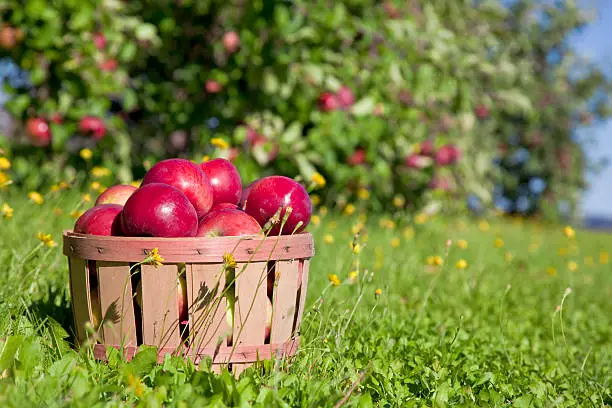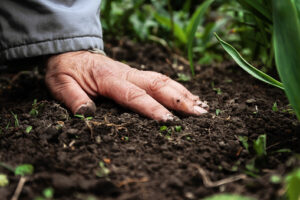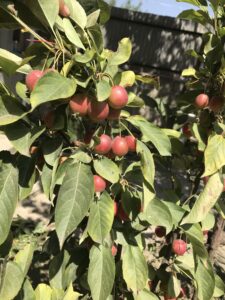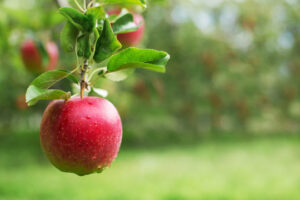Table of contents
- Introduction
- Photosynthesis Process in Apple Trees
- Impact of Reduced Sunlight on Apple Tree
- Measures to Mitigate the Effects of Reduced Sunlight
- Research and Developments in Apple Cultivation
- Conclusion

Introduction
As winter approaches and daylight hours grow shorter, it’s natural to wonder how your apple trees will be affected. Apple trees go through a complex growth process, and changing seasons can have a significant impact on their health and yield. Understanding the effects of reduced sunlight on apple trees can help you take proactive steps to maintain the vitality of your orchard and protect your harvest.
Apple Trees Growth: To understand the effects of reduced sunlight on apple trees, it’s essential to understand how they grow. Apple trees require a delicate balance of factors to thrive, including water, nutrients, and light. As the seasons change, apple trees transition from dormancy to budding, flowering, and fruiting. A lack of sunlight can disrupt the growth process, delaying budburst and reducing the strength of the tree.
Effects of Changing Seasons on Apple Trees: The changing seasons can have both positive and negative effects on apple trees. In the spring, warmer temperatures and increased sunlight encourage budburst and promote healthy growth. However, as summer turns to fall, apple trees slow down their growth and begin preparing for winter. Reduced sunlight during this time can interfere with crucial processes like photosynthesis and leave the trees vulnerable to pests and disease. Overall, understanding how reduced sunlight affects apple trees and implementing proactive measures can help you maintain a healthy and productive orchard.

Photosynthesis Process in Apple Trees
Photosynthesis is the process by which plants and trees convert light energy into chemical energy to generate food. Apple trees also undergo photosynthesis, with leaves serving as the primary sites of this process. Sunlight plays a crucial role in photosynthesis, as it provides energy to convert carbon dioxide and water into glucose and oxygen. Reduced sunlight means reduced energy for apple trees to produce food, which affects their growth and yield. Pigments such as chlorophyll and carotenoids help capture light energy during photosynthesis. Chlorophyll appears green, while carotenoids are yellow, orange, and red. Apples contain these pigments, which are responsible for their characteristic colors. During autumn, the green color of chlorophyll disappears, revealing the other pigments and changing the color of apples. However, reduced sunlight can affect the pigments and lead to changes in the color and quality of apples. So, imagine being an apple tree, always working hard to produce food and stay healthy. Suddenly, winter comes, and the temperature drops, causing reduced sunlight. Your energy levels drop, and you become weak. You start to lose your color and quality, and your yields decrease. That’s the effect of reduced sunlight on apple trees.
Impact of Reduced Sunlight on Apple Trees
Apple trees are among the most globally cultivated fruit trees, and they require specific conditions to produce excellent fruits. However, changes in seasons and reduced sunlight can impact apple tree growth, leading to reduced yield and quality.
Photosynthesis Process in Apple Trees the Sun. In apple trees, photosynthesis mainly occurs in leaves, where chlorophyll pigments absorb sunlight. Reduction of sunlight hours can significantly impact the rate of photosynthesis in apple trees.
Impact of Reduced Sunlight on Apple Trees Reduced sunlight hours have numerous effects on apple trees, which can negatively impact their growth and yield. Firstly, apple trees experience delayed budbursts, which can affect their maturity and fruit quality.
Secondly, the reduction in sunlight leads to reduced growth and yield, resulting in smaller fruits and less productivity. Additionally, reduced sunlight increases apple trees’ susceptibility to diseases and pests, leading to weakened trees and damaged fruits. Changes in fruit quality also occur due to reduced sunlight, causing a difference in color, texture, and taste.
Measures to Mitigate Effects of Reduced Sunlight
Imagine you’re a farmer who’s just learned that the sun is going to be playing favorites and depriving your apple trees of the sunlight they so desperately need. Well, fear not! There are several measures you can take to mitigate the effects of this reduction in sunlight. First, you can optimize your orchard layout and canopy management. This involves properly positioning your apple trees so that they receive as much sunlight as possible. You’ll also want to make sure that your trees’ canopies are pruned regularly to allow sunlight to penetrate deep into the branches. Another solution is to use reflective mulch. This helps to reflect sunlight back onto the trees, effectively increasing the amount they receive. If all else fails, you can always resort to using artificial lights. These won’t be as effective as natural sunlight, but they will provide your apple trees with the light they need to thrive. You can also apply growth regulators to your apple trees to help them cope with the reduced sunlight. These can help to accelerate the growth process and improve the survival rate of your trees. Finally, make sure you select apple cultivars that are suitable for your specific climate and the amount of sunlight you receive. With these measures in place, you can ensure that your apple trees are as healthy and productive as possible, even in the face of reduced sunlight. So don’t stress and start implementing these solutions today!
Research and Developments in Apple Cultivation
Breeding new apple cultivars is a never-ending process, and farmers are continuously striving to grow cultivars that cater to specific environmental conditions. For areas with reduced sunlight hours, the apple varieties need to be adapted accordingly. The new cultivars aim to achieve better yields and improved adaptability to changing weather patterns. After all, the apple tree industry is in constant evolution. The usage of genetic engineering is another example of how we can improve apple trees. This technique aims to enhance resistance to pests and diseases, increase drought tolerance, and even improve the overall quality of the fruit produced. However, we must keep in mind that this is a sensitive topic, and the use of genetic engineering should always be carefully monitored. We don’t want any unintended consequences, do we? In conclusion, Breeding new apple cultivars and using genetic engineering techniques is an ongoing process that will likely continue to evolve as technology advances. I wonder if we will ever get to consume apples that can make us fly or become invisible. Alas, we should remain content with the current set of fruiting trees, which can at least withstand reduced sunlight hours better.
Conclusion
Reduced sunlight can have significant effects on apple trees. Delayed budburst, reduced growth, and yield, increased susceptibility to diseases and pests, and changes in fruit quality are some of the impacts. However, certain measures can be taken to mitigate these effects, like optimizing orchard layout and canopy management, using reflective mulch, artificial lights, and growth regulators, and planting suitable apple cultivars. With advancements in research and development for better yield and adaptability, apple cultivation is expected to continue flourishing.



